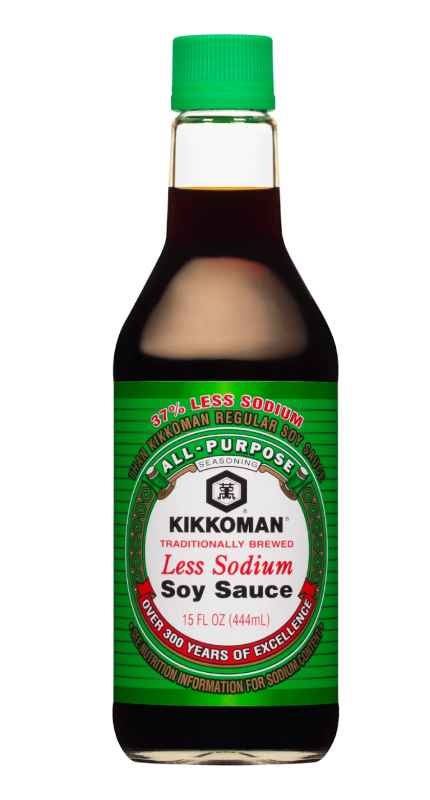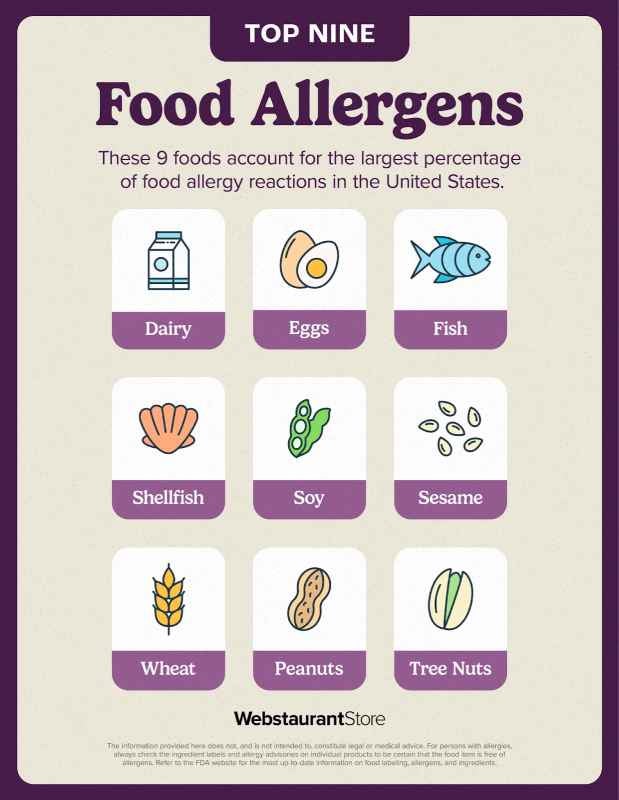Anyone who cooks professionally needs to know how to accommodate common dietary restrictions. Customers may have dietary restrictions for health, religious, political, social, or cultural reasons. Knowing the most common dietary restrictions can help you serve the most customers and keep them coming back. In this article, I break down how to best accommodate dietary restrictions, from vegetarian to Keto and everything in between.
Key Takeaways:
- There are many dietary restrictions out there, so knowing them all is key.
- Proper menu planning and ingredient sourcing can help you accommodate all customers you may serve.
- Accommodating dietary restrictions can be easy and fun to do with the right preparation and mindset.
Common Dietary Restrictions
Any chef who has worked in the restaurant industry can tell you there are nearly as many dietary restrictions as there are customers. Below is a list of the most common dietary restrictions you may encounter in the food industry, what specific items or ingredients they actually restrict, and how you can tweak your menu items to serve these individual customers.
Vegetarian
A vegetarian diet excludes meat but may still allow many items made using animal products (like cheese or honey). Some vegetarian diners get even more specific in their diet, like lacto-ovo vegetarian (which allows dairy products and eggs) and lacto vegetarian (which allows dairy products but not eggs). It is estimated around 5% of the American population follows a vegetarian diet.
What the vegetarian diet excludes: A vegetarian diet excludes all meat products. This includes beef, poultry, seafood, and sometimes dairy and eggs. As mentioned above, there can be some exceptions based on the customer’s preferences, so make sure to ask about them.
What the vegetarian diet includes: The vegetarian diet includes vegetables, grains, legumes, oils, fruits, and nuts. Dairy and eggs may be consumed by some vegetarians, as well as animal byproducts such as rennet used in cheese making or isinglass (a fish product used to remove fine particles in beer).
Easy modifications for the vegetarian diet: The most important piece of making the necessary adjustments for a vegetarian customer is first understanding exactly what they can eat. But items such as beans, tofu, or heartier veg can take the place of cuts of meat. With this diet type, you still have a plethora of ingredients to choose from, as long as they are not animal flesh.

I once worked for a chef who shared, “The talents of a good cook come out when meat is taken away.” I wholeheartedly agree with this notion. While meat cookery is a must-know, being able to make a satisfying and delicious meal without meat shows your mastery over the art of cooking and your understanding of the large variety of ingredients vegetarians can consume.
Vegan
A vegan diet is similar to a vegetarian diet but excludes all products that are made from animals or animal byproducts. The vegan diet is very strict, so knowledge of how ingredients are made and where they are sourced from is essential; most vegan diners will ask. It is estimated that 4% percent of the American population follows a vegan diet.
What the vegan diet excludes: This dietary restriction excludes all products made from or with animal products. Flesh cuts of meat, items from animals such as rennet, and even honey are all ingredients excluded from the vegan diet.
What the vegan diet includes: Legumes, grains, vegetables, fruits, and items such as tofu can all be eaten on a vegan diet. As long as animal material is not involved in the ingredients in some way, it is considered vegan.
Easy modifications for the vegan diet: For vegan cooking, swapping in naturally umami-rich foods is important. Mushrooms, potatoes, and tomatoes are great vegetables to swap in for a very tasty dish. Additionally, plant-based proteins or ground plant-based meats have taken over in popularity for the general consumer.

While working at The Culinary Institute of America’s student cafe, we introduced the Impossible Burger to the student body, and it was a massive hit. The rise of plant-based meats is truly exciting for chefs, as you can still cook within the framework of certain “proteins” while catering to those consumers who follow a vegan diet.
Gluten-free or Celiac
Gluten is a protein found in wheat, barley, and rye, which some people have difficulty digesting. Customers who are eating a gluten-free diet will do it mainly for one of two reasons. One is that they have a gluten intolerance or Celiac disease. Celiac disease is an autoimmune disorder in which gluten causes damage to the lining of the small intestine. Approximately 2 million people in America have celiac disease, and 20% to 30% of Americans follow a gluten-free diet.
What a gluten-free diet excludes: A gluten-free diet excludes all gluten-based ingredients. Because gluten naturally appears in many grains, you won’t see it listed separately on ingredient lists; you just have to know what foods—wheat, barley, rye, or related grains like spelt and triticale—commonly have gluten. A gluten-free diet will also exclude products that may have come into contact with gluten. Bread, pasta, soy sauce, and all other products with gluten cannot be consumed by gluten-free individuals.
What a gluten-free diet includes: This dietary restriction excludes gluten, so any ingredient or dish without it can be consumed. Kitchen staples like meat, dairy, animal products, and eggs are all gluten-free in their whole form.
Easy modifications for gluten-free diets: Common substitutes for gluten-containing grains are rice, bean, nut, or corn-based flours and pantry products. Having gluten-free bread or pasta on hand can make gluten-free substitutions easy for your staff and guests. Creating a detailed protocol for preparing gluten-free food in a space that avoids cross-contact builds trust and safety for your customers. Even a small amount of gluten can be harmful to many gluten-free diners.
Due to how many people follow a gluten-free diet, accommodating this dietary restriction is a must. There are entire blogs; restaurant recommended lists, and other media sites that highlight restaurants with gluten-free friendly options. Being a leader in this space will not only attract new customers but may also give your restaurant more attention and business due to your accommodations.
Lactose-free
Lactose, otherwise known as “milk sugar,” is found in mammals’ milk and is a staple ingredient in many foods, from butter to cheese and yogurt. Most people who follow a lactose-free diet are lactose intolerant and have difficulty digesting lactose. Lactose intolerance affects 30 to 50 million Americans.
What a lactose-free diet excludes: Lactose-free diets exclude all items that contain lactose. Because lactose is a naturally occurring component in dairy products, you won’t see lactose listed on most ingredient lists; you just have to know what foods commonly contain lactose. These would be milk, yogurts, ice creams, cheeses, sour creams, whipping creams, and other dairy products.
What a lactose-free diet includes: A lactose-free diet can include all ingredients that do not contain lactose. While the options are many, some favorite foods for the everyday consumer include lactose in some way. Finding ways around this is key as a chef.
Easy modifications for a lactose-intolerant diet: Nut-based milk, lactose-free milk, and soy milk are all ingredients that can be used to modify a dish to be lactose-intolerant-friendly. There are dairy-free cheeses that are made from nuts, different oils that can be subbed in for butter, and nutritional yeast that can make up for the loss of umami from cheese in certain applications.
Lactose-free is a dietary restriction that can be tricky as it takes away the rich, creamy, and one-of-a-kind eating experience that dairy can provide. I highly suggest asking your purveyors to sample dairy-free products and to hold a high standard of taste and usability for all dairy substitute ingredients you bring on the menu.
Keto
A keto diet is a low-carb, high-fat diet that is used for weight loss and to gain other health benefits when followed correctly. A keto diet usually consists of 70% fat, with 20% of protein and only 10% of carbs. A 2021 survey by the International Food Information Council found that 5% of Americans follow a keto diet each year, with this diet type being popular for those trying to lose weight.
What a keto diet excludes: Unlike other dietary restrictions on this list, a keto diet doesn’t necessarily ban any ingredients but rather restricts the percentage of carbs and sugars that can be consumed. Some common foods to avoid on a keto diet include grains, starchy vegetables, sugary products, and baked goods.
What a keto diet includes: Some keto-friendly foods are foods that are high in fat and low in carbs. Animal proteins, dairy products, cheeses, low-carb vegetables, and oils are all friendly to a keto diet.
Easy modifications for a keto diet: Swapping in cauliflower rice or zucchini noodles for rice and pasta is a classic way to accommodate a customer following a keto diet. Additionally, offering menu items that are animal protein and fat-forward is key for those who choose to eat keto.
Removing carbs from cooking may seem like a challenge, but keto cooking can be pretty simple. Fat, animal products, and other keto-friendly ingredients are all extremely flavorful and easy to cook with. As long as you have an awareness of the amount of carbs going into your dish, accommodating keto diners should be relatively simple.

Diabetic Diet
A customer with diabetes needs to be cognizant of the amount of sugars they consume. Sugars can be in the form of refined sugar, or they can be present as naturally occurring components in starchy and carb-heavy foods. It is estimated that 11.6% of the US population is living with diabetes, so having sugar-free, diabetic-friendly options on your menu is a smart move to appeal to these customers.
What a diabetic diet excludes: Customers with diabetes will aim to avoid carb-heavy foods, foods with high amounts of sugar and refined sugar, and, in some cases, alcohol. Additionally, they may try to avoid trans fats, saturated fats, and very salty foods.
What a diabetic-friendly diet includes: Dark, leafy greens, healthy fats such as avocados and salmon, berries, beans, and yogurts are just a few of the examples of the types of foods you can include for customers with diabetes.
Easy modifications for a diabetic-friendly diet: Substituting olive oil or avocado oil for butter, offering dessert options that rely on fruits and low sugars, and having dishes that are low in fat and starches are all ways you can cater to diabetic eaters while also maintaining a menu that is craved by the general public.
Cooking for guests with diabetes really should not be a challenge unless your menu is focused in a space that has high-fat and high-sugar foods (think a burger restaurant or dessert-focused restaurant). That being said, a full understanding of your recipes and clear communication from the front-of-house staff is key to ensuring a great experience for all diabetic diners.
Low-sodium
A low-sodium diet is commonly followed by consumers with high blood pressure, kidney disease, or heart disease. It can be a challenge for consumers, as many restaurants use salt in abundance. Nearly half of adults in America suffer from high blood pressure, so having options for guests with sodium restrictions is good business.
What a low-sodium diet excludes: A low-sodium diet excludes nearly all processed foods, from processed deli meat and cheese to soy sauce, pickles, and most fast-food-type foods. Most foods that come in jars or cans have added sodium as a preservative.
What a low-sodium diet includes: A low-sodium diet would include eating unsalted nuts, fruits and vegetables, animal proteins, unprocessed meats, and fresh fish. Most food that can be consumed as whole ingredients (not from a jar or a can) tends to be low in sodium.
Easy modifications for a low-sodium diet: To accommodate a low-sodium diet, you need to know your ingredients, recipes, and cooking process so you know where you can remove added salt. Having low-sodium ingredients on hand (like low-sodium soy sauce) can save you time.

Between 2022 and 2030, the reduced sodium food product market is expected to grow 5.1% annually. With heart disease, kidney disease, and high blood pressure affecting so many consumers, offering low-sodium options allows you to serve a broad range of customers.
Designing a Menu to Accommodate Dietary Restrictions
Menu design can be the way you open your menu to all dietary restrictions while staying true to the food you cook. There can be a negative view from some in the food world when it comes to handling dietary restrictions, but as a food business operator, you should see accommodating these restrictions as an opportunity. If you can build a customer base that trusts your product and your ability to offer food they can eat, then you have loyal customers who will continue to come back. Below are some considerations when designing your menu.
Dietary Restrictions & Food Allergies: What’s the Difference?
While food allergies can be considered a dietary restriction, they are not the same thing. A dietary restriction is an aspect of your diet that you cannot consume due to personal beliefs or health concerns. Food allergies are specific ingredients that would cause an allergic reaction like hives, anaphylaxis, or loss of consciousness. Like some dietary restrictions, food allergies are not chosen and can cause serious health issues.

When you look at accommodating dietary restrictions, you look to swap in ingredients and tweak dishes to fit the customer’s needs. Your focus is on that specific diet type and how you can build your menu to ensure a customer can come dine with you, even with that restriction in place. Accommodating dietary restrictions demands full knowledge of your menu items, ingredients, and sourcing. It also demands you have an understanding of different diet types, have trained your staff on this knowledge, and can build an experience that is safe and respectful to the restriction the customer presents.
When it comes to food allergies, you are not just looking at diet and tweaks. You are looking for an all-out avoidance of contact with the allergen ingredient in the entire cooking and serving process. Take peanuts, for example, an ingredient that can be deadly for those allergic to them. It takes a lot of care and process control to create an allergen-free cooking environment for guests with food allergies. Most health departments are happy to help you identify training resources for yourself and your staff so you can develop allergen-friendly cooking processes.
Frequently Asked Questions (FAQs)
Dietary restrictions are so common that you should expect them to show up every day that you serve guests. Below are a few of the common questions when it comes to dietary restrictions in restaurants.
Bottom Line
As you can see, there are many different dietary restrictions you can run into when serving customers in a restaurant or food business. Having an understanding of the most common ones and having a menu-based plan on how to address each one sets your team up for success and offers a great experience for customers with these restrictions. Focusing on how your menu can be shaped to consider these restrictions can set you apart from the competition and create a loyal customer base that trusts and loves the food you make.



